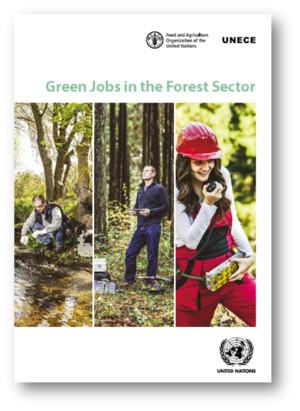
- The Ability to Provide Sustainable Jobs - Critical for the Future of the Forest Sector
- Decent Green Jobs in the Forest Sector in a Green Economy
- Gender Mainstreaming in the Forest Sector
Historical view
The need for consideration of questions related to the forest sector workforce in the UNECE and FAO programme was recognized by member States as far back as 1947, at the International Timber Conference. A concept of joint work between UNECE, FAO and ILO originated a few years later in Geneva. As a result, the Joint Committee on Forest Working Techniques and Training of Forest Workers was founded under the joint auspices of UNECE, FAO and ILO in 1954.
At that time, the technical work of the Joint Committee was undertaken by forest experts. Between 1955 and 1978, study groups focused on the importance of job security, competitive wage rates, adequate living conditions, technical training facilities and better safety measures for forest workers.
Along with the changes of economic context and the transformation of the forest sector itself, the forest workforce experienced a number of structural changes. Accordingly, the topics of UNECE and FAO work related to forest workers have broadened to include environmental and social cross-cutting topics, such as ecosystem management in forestry, climate change mitigation and adaptation, green economy, gender equity, aging workforce and adaptation of skills to technological developments.
Today, the Section’s work on Green Jobs in the Forest Sector is supported by the UNECE/FAO Team of Specialists on Green Jobs in the Forest Sector (Joint ILO/ECE/FAO Expert Network).
